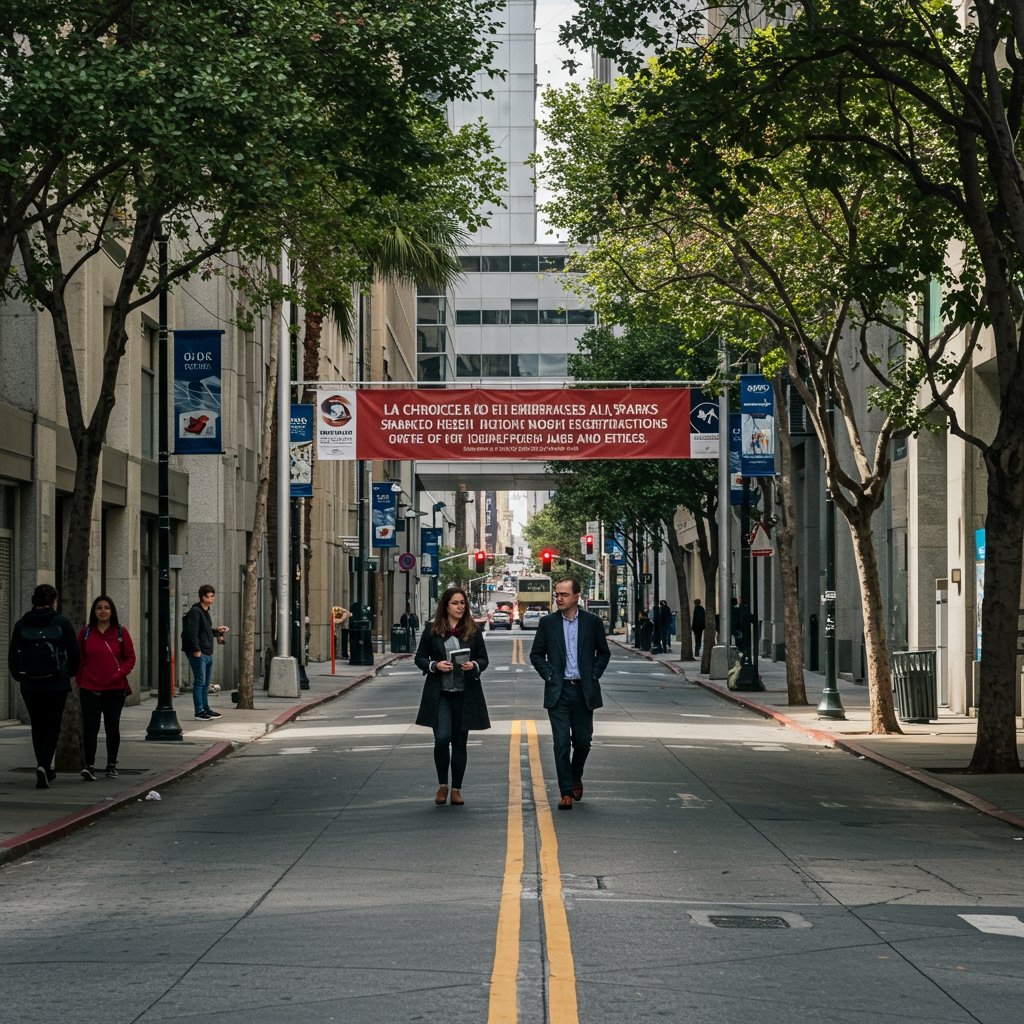Introduction: A New Era and Immediate Friction
The Los Angeles Chronicle, a prominent voice in West Coast journalism, officially announced on May 20, 2025, the phased implementation of new artificial intelligence tools within its core editorial workflow. This strategic technological shift, which commenced its initial phase on May 15, is set to integrate AI functionalities for tasks such as headline generation and preliminary draft analysis across 10 core reporting beats. The move, heralded by the Chronicle’s management as a necessary step towards enhancing efficiency and focusing journalistic resources, has immediately ignited intense negotiations with the West Coast Journalists’ Guild Local 49. The union, representing over 300 dedicated newsroom employees, has promptly voiced “significant concerns” regarding the potential repercussions of this technological integration, setting a firm deadline of June 30 for reaching a resolution.
Union’s Stance: Job Security and Ethical Guardrails
The West Coast Journalists’ Guild Local 49 wasted no time in expressing its reservations following the Chronicle’s announcement. Union leadership articulated “significant concerns” that center primarily on the potential for job displacement within the newsroom ranks as AI tools become more sophisticated and integrated into daily operations. Beyond the critical issue of job security for its over 300 members, the Guild has also stressed the urgent need to establish clear, robust ethical boundaries governing the use of artificial intelligence in journalistic practice. These concerns extend to ensuring the accuracy and integrity of news content, safeguarding source privacy when AI handles data, preventing algorithmic bias from influencing reporting, and maintaining the essential human judgment that underpins credible journalism. The union views these negotiations not just as a labor dispute but as a foundational discussion about the future role of human journalists in an AI-augmented news environment. The June 30 deadline underscores the urgency with which the union is approaching these critical discussions, signaling that they seek a swift and decisive agreement to protect their members and the standards of their profession.
Management’s Vision: Efficiency and Focus
In contrast to the union’s apprehensions, the Los Angeles Chronicle’s management has presented the AI integration as a positive, forward-looking initiative designed solely to bolster operational efficiency and enhance reportorial accuracy. Management asserts that the introduction of AI tools for routine tasks like initial draft analysis and headline suggestions will liberate journalists from more repetitive work, allowing them to dedicate more time and energy to complex investigative reporting, in-depth analysis, and critical source development – areas where human expertise is irreplaceable. They argue that this technological enhancement is not intended to replace human journalists but rather to augment their capabilities, making the newsgathering process more streamlined and effective. Furthermore, the Chronicle has sought to reassure the union and its employees by stating unequivocally that current staffing levels will be maintained through 2026. This commitment is intended to alleviate immediate fears of layoffs stemming directly from the AI rollout, providing a period for evaluation and adaptation while negotiations proceed.
The Negotiation Table: Key Issues and Deadlines
The discussions currently underway between the Los Angeles Chronicle management and the West Coast Journalists’ Guild Local 49 are reportedly intense and cover a range of critical issues. At the forefront are demands for concrete job security guarantees beyond the 2026 commitment, potentially including clauses regarding retraining programs for employees whose roles might evolve due to AI, and defining clear scope limitations on AI’s functions to ensure it remains a tool supporting human journalists, not replacing them. Establishing detailed ethical guidelines is also a major point of contention, with the union pushing for transparency in AI use, accountability mechanisms for AI-generated content errors, and protocols for handling sensitive information when AI is involved. The June 30 deadline looms large over these negotiations, adding significant pressure on both parties to find common ground and forge an agreement that addresses the union’s substantial concerns while allowing the Chronicle to pursue its technological strategy. Failure to reach an agreement by this date could lead to escalated labor actions or potential delays in the AI’s phased rollout.
Timeline and Scope of AI Implementation
The initial phase of the AI implementation, which began on May 15, is focused on what the Chronicle deems less complex, high-volume tasks. Integrating AI for headline generation involves algorithms suggesting various headline options based on article content and SEO considerations, while preliminary draft analysis could include checks for grammatical errors, style inconsistencies, or even flagging potential factual discrepancies for the journalist’s review. These tools are being piloted across 10 core reporting beats, allowing the Chronicle to test the AI’s effectiveness and identify potential issues in a controlled environment before a wider deployment. The phased approach, announced on May 20, 2025, suggests that the Chronicle intends to gradually expand AI capabilities and integration points across the newsroom, contingent perhaps on the success of the initial phase and, crucially, the outcome of the ongoing union negotiations.
Industry-Wide Implications
The situation at the Los Angeles Chronicle is being closely monitored by other major West Coast editorial news outlets and indeed, news organizations across the country. As artificial intelligence technology continues to advance rapidly, newsrooms are increasingly exploring ways to leverage it for efficiency and innovation. However, the integration of AI into the historically human-centric practice of journalism raises profound questions about the future of the profession, the role of journalists, and the ethical responsibilities of news organizations. The negotiations between the Chronicle and the West Coast Journalists’ Guild Local 49 are seen as a potential bellwether, setting precedents for how labor and management will navigate the complex intersection of technology and journalism in the digital age. The outcome of these talks, particularly concerning job security and ethical frameworks, could influence how similar technological advancements are pursued and implemented elsewhere.
Conclusion: A Pivotal Moment
The Los Angeles Chronicle’s decision to integrate AI into its editorial workflow marks a significant moment for the publication and its staff. While management envisions a future of increased efficiency and enhanced journalistic focus, the West Coast Journalists’ Guild Local 49 has rightly highlighted the critical human and ethical considerations at stake. The ongoing negotiations, set against the backdrop of a June 30 deadline, are a crucial test of how a major news organization and its labor force can collaboratively adapt to technological change while safeguarding jobs, upholding journalistic ethics, and ensuring the continued production of high-quality news. The resolution reached in Los Angeles will undoubtedly resonate far beyond the Chronicle’s newsroom, influencing the conversation about AI’s role in journalism across the industry.



















